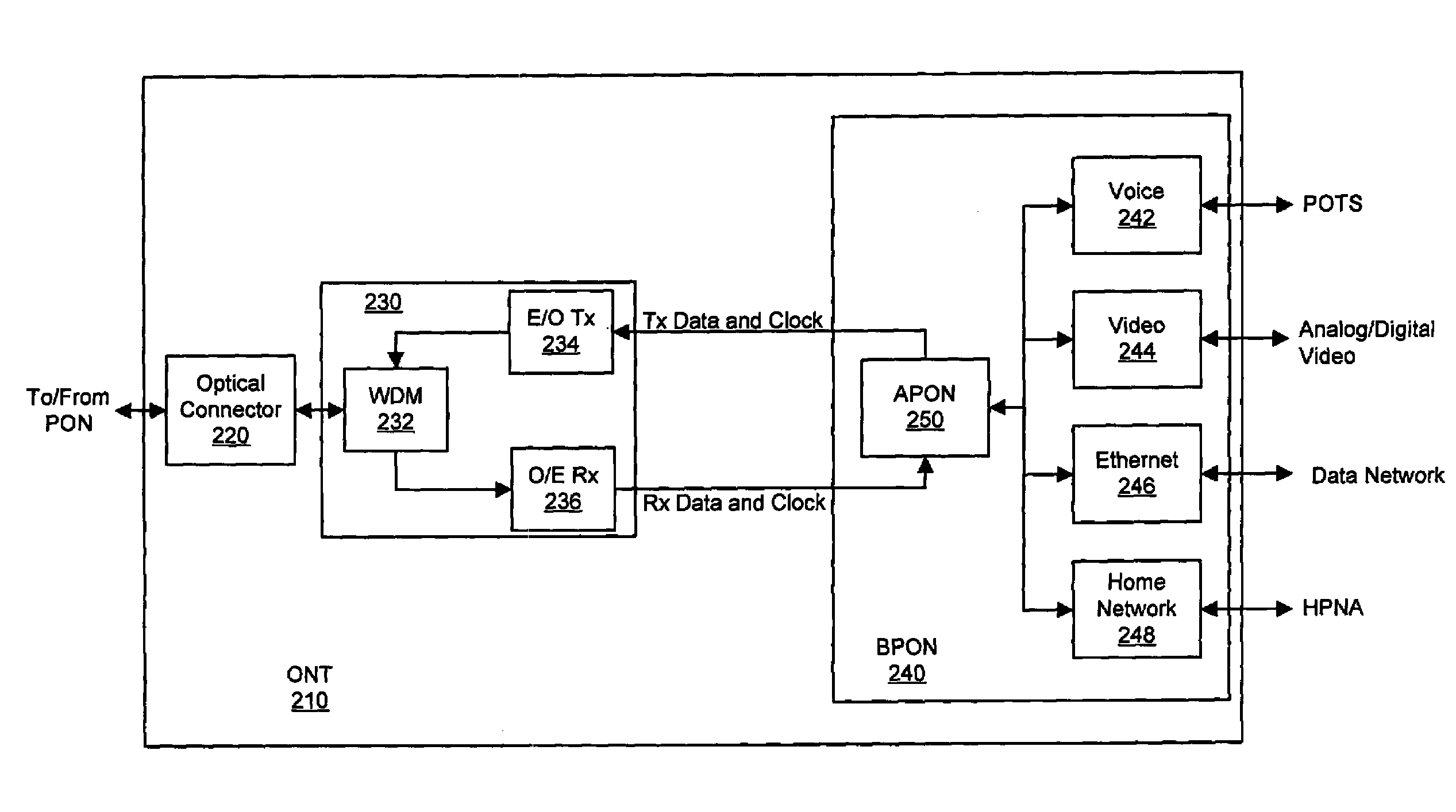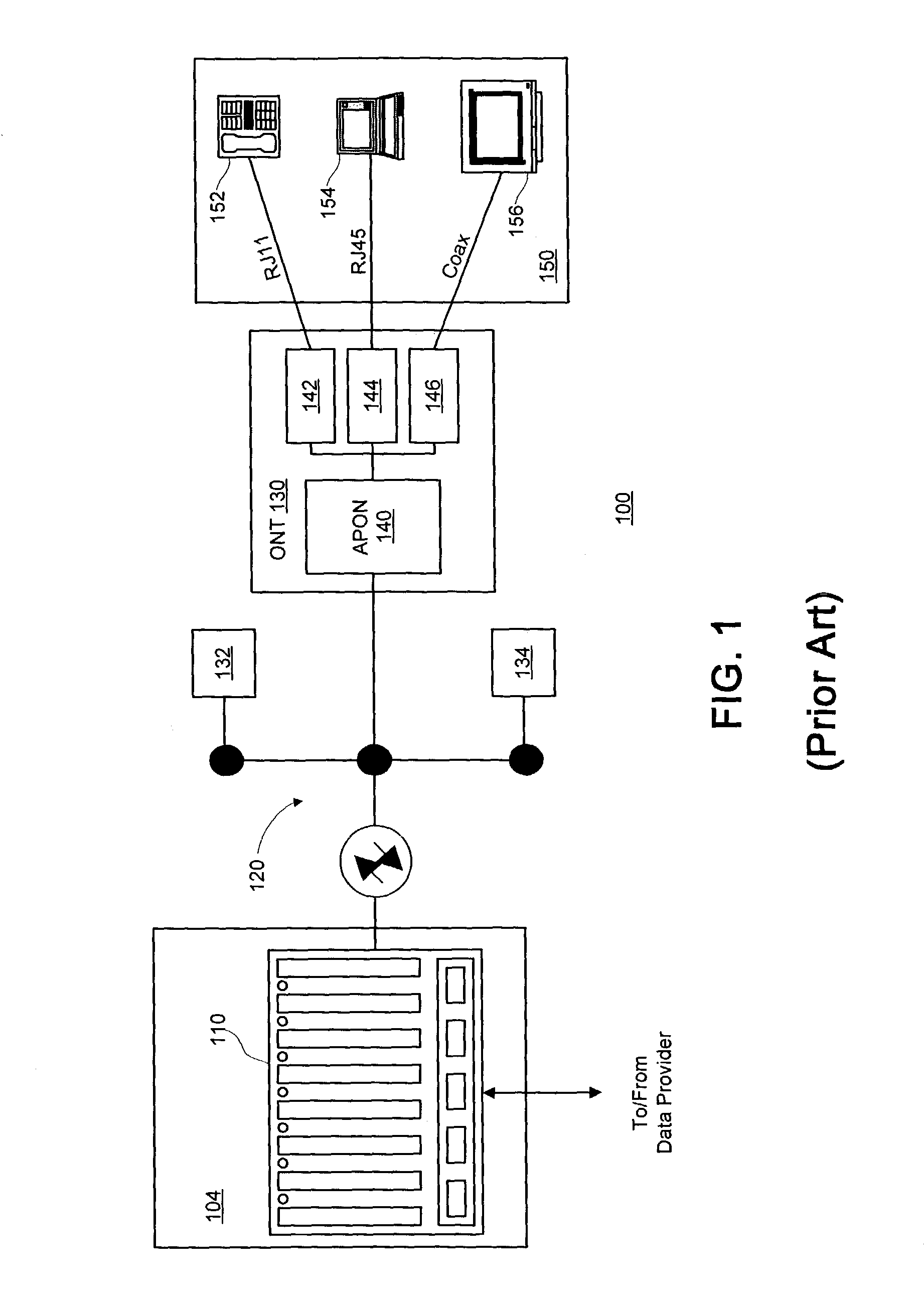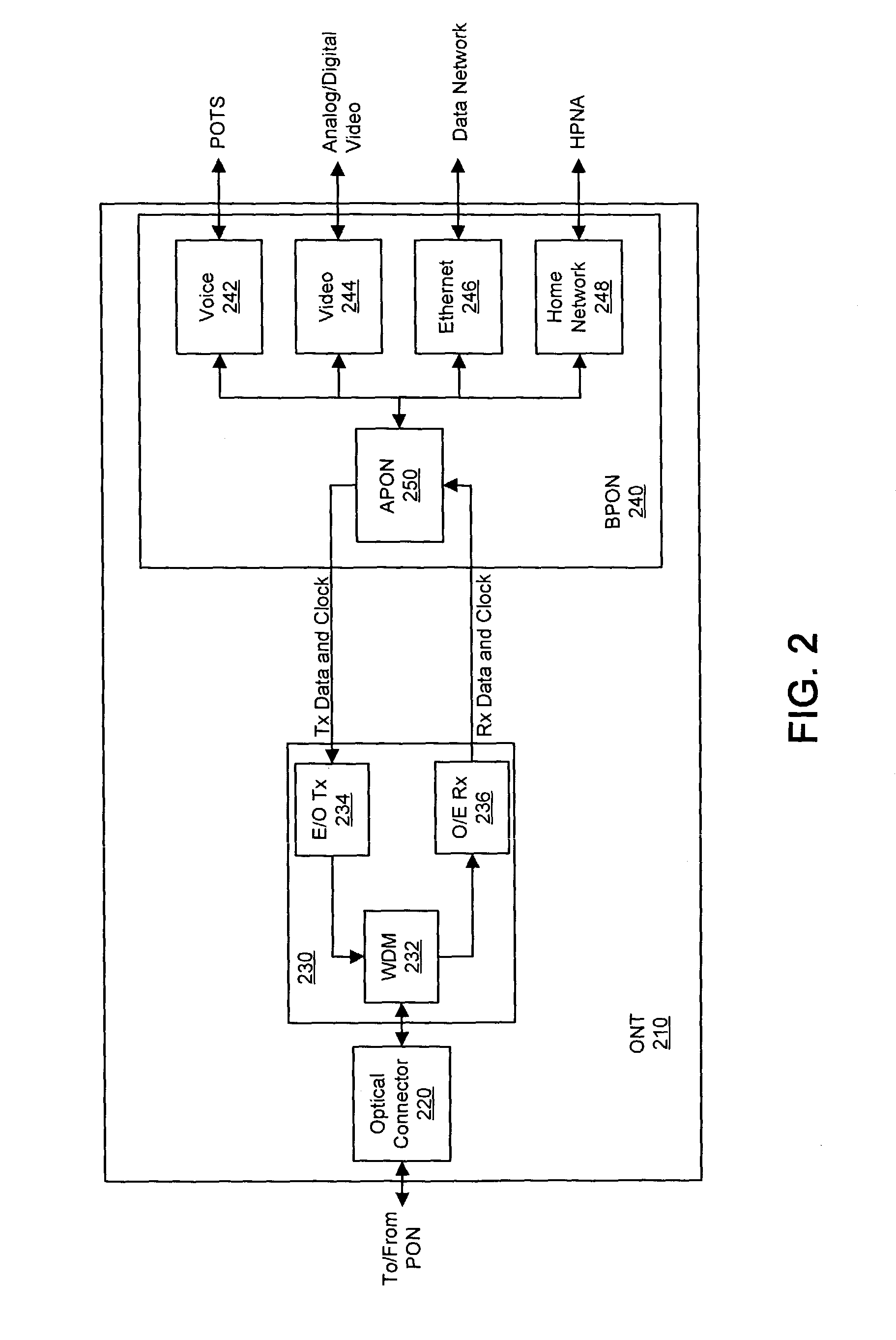System and method for improved data protection in PONs
a data protection and data technology, applied in the field of communication using broadband passive optical networks, can solve the problems of limiting the size of the ont, unnecessarily high power consumption, and limitations of the known ont,
- Summary
- Abstract
- Description
- Claims
- Application Information
AI Technical Summary
Benefits of technology
Problems solved by technology
Method used
Image
Examples
Embodiment Construction
[0031]In the interest of brevity, a number of acronyms, initialisms, and abbreviations may be used in the following discussion. To provide a useful reference, these terms and their corresponding representation are listed below:
[0032]
ADSLAsymmetric Digital Subscriber LineAPONATM Over Passive Optical NetworkATMAsynchronous Transfer ModeBERBit Error RateBFPBack Facet PhotodiodeBIPByte Interleaved ParityBM LDRBurst Mode Laser DriverPONBroadband Over Passive Optical NetworkCATVCoaxial Cable TelevisionCLECCompetitive Local Exchange CarrierCOCentral OfficeCM AGCContinuous Mode Automatic Gain ControlCM CDRContinuous Mode Clock & Data RecoveryCM TIAContinuous Mode Trans-Impedance AmplifierCRCCyclic Redundancy CheckDBADynamic Bandwidth AllocationDFBDistributed Feedback LaserDSDownstreamDSLDigital Subscriber LineDWDMDense Wavelength Division MultiplexingEMIElectro-Magnetic InterferenceEMSElement Management SystemE / OElectrical to OpticalEPBExtended Peripheral BusEPONEthernet Over Passive Optica...
PUM
 Login to View More
Login to View More Abstract
Description
Claims
Application Information
 Login to View More
Login to View More - R&D
- Intellectual Property
- Life Sciences
- Materials
- Tech Scout
- Unparalleled Data Quality
- Higher Quality Content
- 60% Fewer Hallucinations
Browse by: Latest US Patents, China's latest patents, Technical Efficacy Thesaurus, Application Domain, Technology Topic, Popular Technical Reports.
© 2025 PatSnap. All rights reserved.Legal|Privacy policy|Modern Slavery Act Transparency Statement|Sitemap|About US| Contact US: help@patsnap.com



